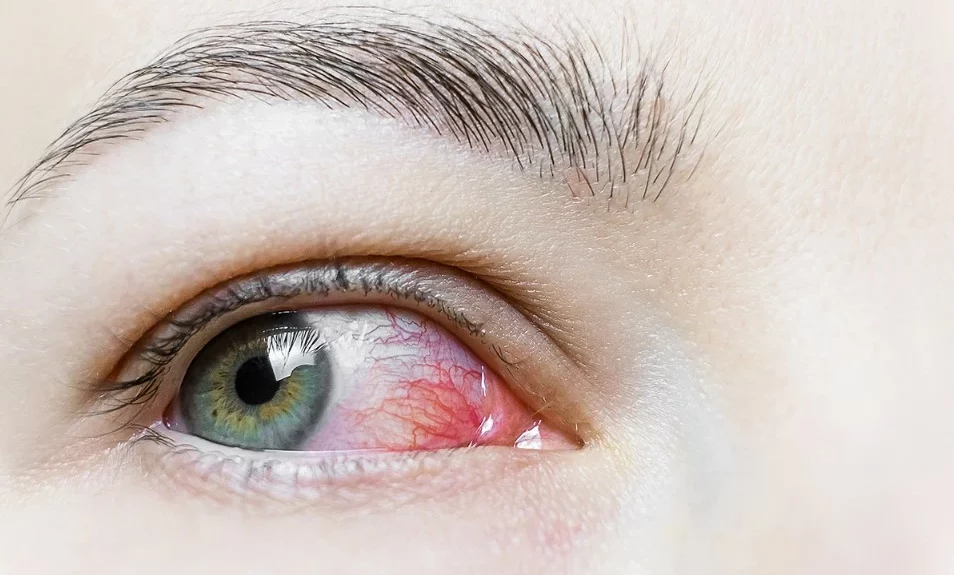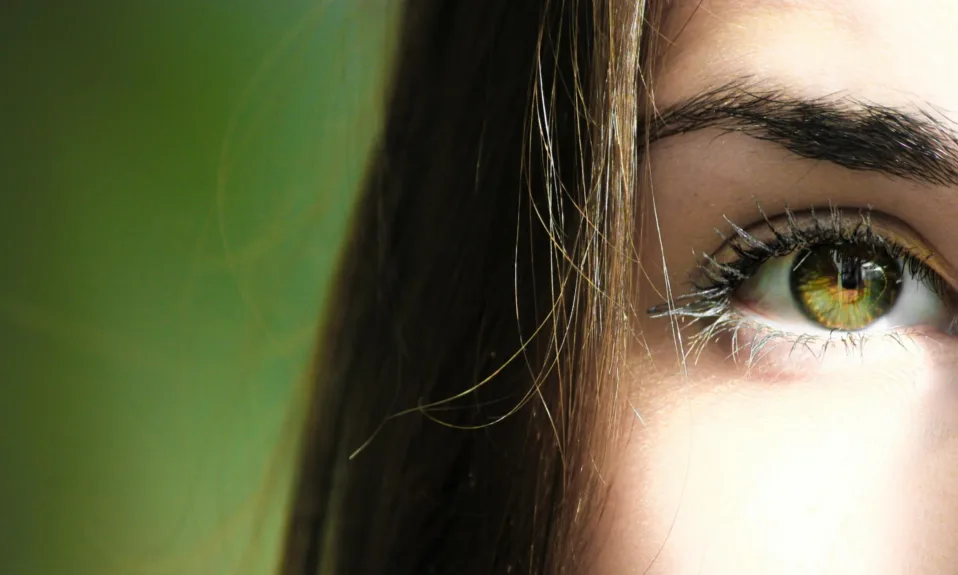What is Commonly Misdiagnosed As Pink Eye? A thin, transparent mucous membrane known as the conjunctiva covers the inside of the eyelid and the outside of the eyeball. To lubricate the eye and defend against external irritants and germs, it secretes tears and mucus.
Conjunctivitis, often known as pink eye or conjunctivitis, is an inflammation of the conjunctiva that causes the white area of the eyeball (sclera) to turn pink or scarlet.
Conjunctivitis can develop from allergies, dry eyes, irritation, eye damage, or viral or bacterial eye infections in the majority of instances. In this article we will discus What is Commonly Misdiagnosed As Pink Eye.
7 Conditions Commonly Misdiagnosed As Pink Eye
Here we mention seven Conditions Commonly Misdiagnosed As Pink Eye.
Allergies
Pink eye is primarily caused by viral or bacterial illness, but it can also be an allergic or irritating reaction.
Adenovirus, which also causes the common cold and other respiratory infections, is the main cause of conjunctivitis. This is why a normal cold or sore throat frequently accompany viral pink eye.
Various other viral strains can also cause this disease. Pink eye can also be caused by a wide variety of bacteria, including Staphylococcus aureus, Streptococcus pneumoniae, and Haemophilus influenza. Rarely, certain parasites or fungus might also cause the disease.
When you are exposed to allergens like pollen, dust, animal dander, and mold, which cause the body to generate histamine, you develop allergic conjunctivitis.
Histamine is an inflammatory chemical that causes swollen eyelids, watery eye discharge, and some nasal symptoms including sneezing and runny nose. It also causes symptoms like redness, stinging, grittiness, and burning in the eyes.
Although these signs and symptoms are comparable to those of contagious pink eye, there are some significant distinctions between the two. Conjunctivitis that is infectious must be distinguished from noninfectious or allergic conjunctivitis since the former is extremely contagious and requires appropriate measures to stop it from spreading.
The majority of conjunctivitis cases are minor and self-resolving; however, if the problem persists, worsens, or becomes painful, you may need treatment. The same treatment will not be effective on all forms of pink eye because their underlying causes vary.
The symptoms of viral conjunctivitis can be relieved with a warm compress and other at-home remedies, but there is no cure for it; it goes away on its own after the virus has run its course.
A brief course of antibiotics is often used to treat bacterial conjunctivitis. While the inflammation in allergic conjunctivitis must be controlled with over-the-counter antihistamines.
Most people treat pink eye as though it were caused by bacterial or viral diseases, not aware that allergies can also cause it.
Dry eye syndrome
A frequent ailment known as dry eye syndrome occurs when the eyes are unable to produce enough tears or tears of sufficient quality to maintain appropriate lubrication.
Along with several other symptoms that are typical of conjunctivitis, dryness in the eyes leads to inflammation, which causes them to swell, become red, and become itchy. As a result, misdiagnosis of one for another is fairly possible.
The following symptoms are shared by both dry eye syndrome and pink eye:
- Eyes that are burning or stinging
- Eyes that are red
- Watery eyes
- Irritation of the eyes
- Blurred vision
- Responsiveness to light
COVID pink eye
COVID pink eye, which affects 1%–3% of COVID-19 patients, is characterized by redness in the eyes. According to one study, 1 in 10 COVID-19 hospitalized noncritical patients dealt with this problem while battling the illness.
Iritis
Iritis, also known as anterior uveitis, is an inflammation of the iris that affects the uvea, the middle layer of the eye that lies between the retina and the white portion. Due to several common symptoms like redness, irritation and discomfort in the eye, light sensitivity, and impaired vision, this disorder might be mistaken for pink eye.
Depending on the underlying reason, such as an accident, iritis can affect either one or both eyes.
Keratitis
The cornea is the clear, dome-shaped outer layer of the eye that protects its frontal structures, such as the iris, pupil, and anterior chamber.
The cornea is prone to being inflamed, which results in redness in the eyes, if it becomes irritated, injured, or infected. This ailment, keratitis, can be mistaken for pink eye due to the similarities in its symptoms, which include the following:
- The damaged eye may experience pain, stinging, or discomfort.
- The affected eye is red.
- A lot of tears or discharge coming from the afflicted eye
- Light sensitivity Foggy vision
- Not being able to open your eyes
Stye
A stye (hordeolum) is a tiny, uncomfortable, red bump that appears like an acne pimple or a boil at the edge of the eyelid.
Hair follicles that grow your eyelashes line the edge of your eyelid. These hair follicles are each joined to a small oil gland that is located inside the eyelid. These oil glands serve as a breeding environment for bacteria, which leads to an infection that develops into the stye if one or more of them clog.
Blepharitis
Dead skin cells, germs, and sebum accumulation along the lash line can clog the oil glands beneath, resulting in swelling, itchiness, redness, and irritation along the borders of the eyelids.
The symptoms of blepharitis, a very common ailment, are quite similar to those of pink eye, including eye redness, discharge, excessive tears, sensitivity to light, blurred vision, and crust formation along the eyelashes.
However, various areas of the eye are impacted by each of these disorders. Pink eye involves inflammation of the conjunctiva, whereas blepharitis results in infection of the eyelids.
How to Diagnose Pink Eye Signs and Symptoms
The most typical signs of pink eye include:
- Eyes that are red
- Stinging or burning in the eyes
- Tearing up in the eyes
- Your eyes are discharging a white, yellow, or green substance.
- Your eyelids or eyelashes may have a buildup of crust that makes it challenging for you to open your eyes in the morning.
- Inflammation of the eyelids
- The impression that you have alien objects in your sight
- Intolerance of bright light
- Hazy vision
- Frontal lymph nodes that are painful and swollen
- Using contact lenses in great discomfort, and finding it more challenging to maintain them in place
The problem is that a lot of other eye diseases exhibit pink eye-like signs and symptoms but may be far more dangerous and need for different medical care. Therefore, in order to receive a precise diagnosis and begin treatment as necessary, it is crucial to have a thorough eye examination.
Final Words
Although redness in the white of the eye is typically a sign of conjunctivitis, it can also be a sign of other diseases.
Therefore, before beginning self-treatment or assuming that you have pink eye, have a comprehensive eye exam with an optometrist to determine the exact cause. Only then should you start the proper course of treatment.
FAQs About Pink Eye
Are conjunctivitis and pink eye the same thing?
The white area of the affected eye becomes somewhat pink or red due to conjunctivitis, which is characterized by inflammation in the conjunctiva. Conjunctivitis, a very common eye condition that can have an infectious (viral or bacterial) or noninfectious (allergen) origin, is also known as pink eye.
How long till my pink eye is healed?
The length of conjunctivitis recovery varies by type. The most common variety is viral conjunctivitis, which often goes away on its own in 1-2 weeks without treatment but can occasionally take up to three weeks or longer.
Bacterial conjunctivitis may go away entirely after 2–5 days, but it may also take up to 2 weeks to do so.
How can pink eye be treated at home?
Here are some simple suggestions to encourage a quicker conjunctivitis recovery:
Use a washcloth dipped in cold water to soak your eyes.
Every day, swap out your pillowcase.
Use new towels every day.
Use of eye makeup and contact lenses should be avoided until your situation improves.
Prior to and following eye treatment, properly wash your hands.
If you must, wash your hands thoroughly after touching your eyes.
It’s crucial to keep your clothes, glasses, and towels for personal use exclusively since infectious conjunctivitis is very contagious and spreads through the discharge from the affected eye.





